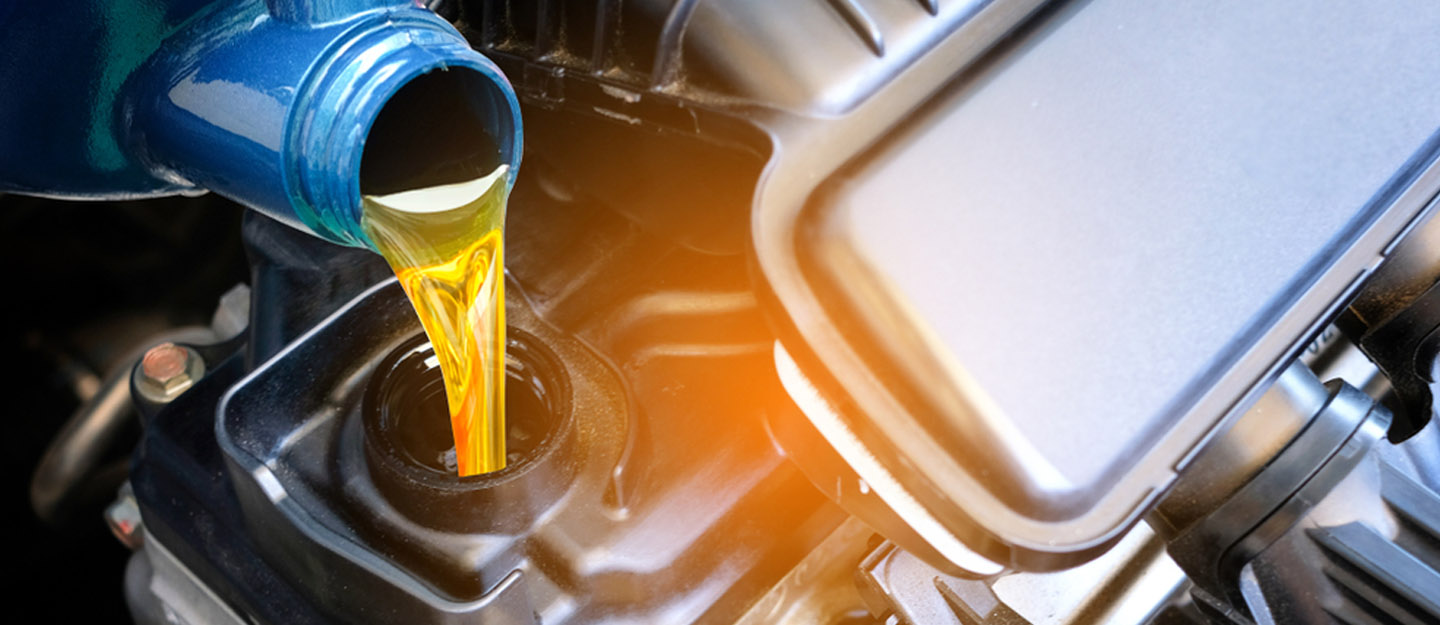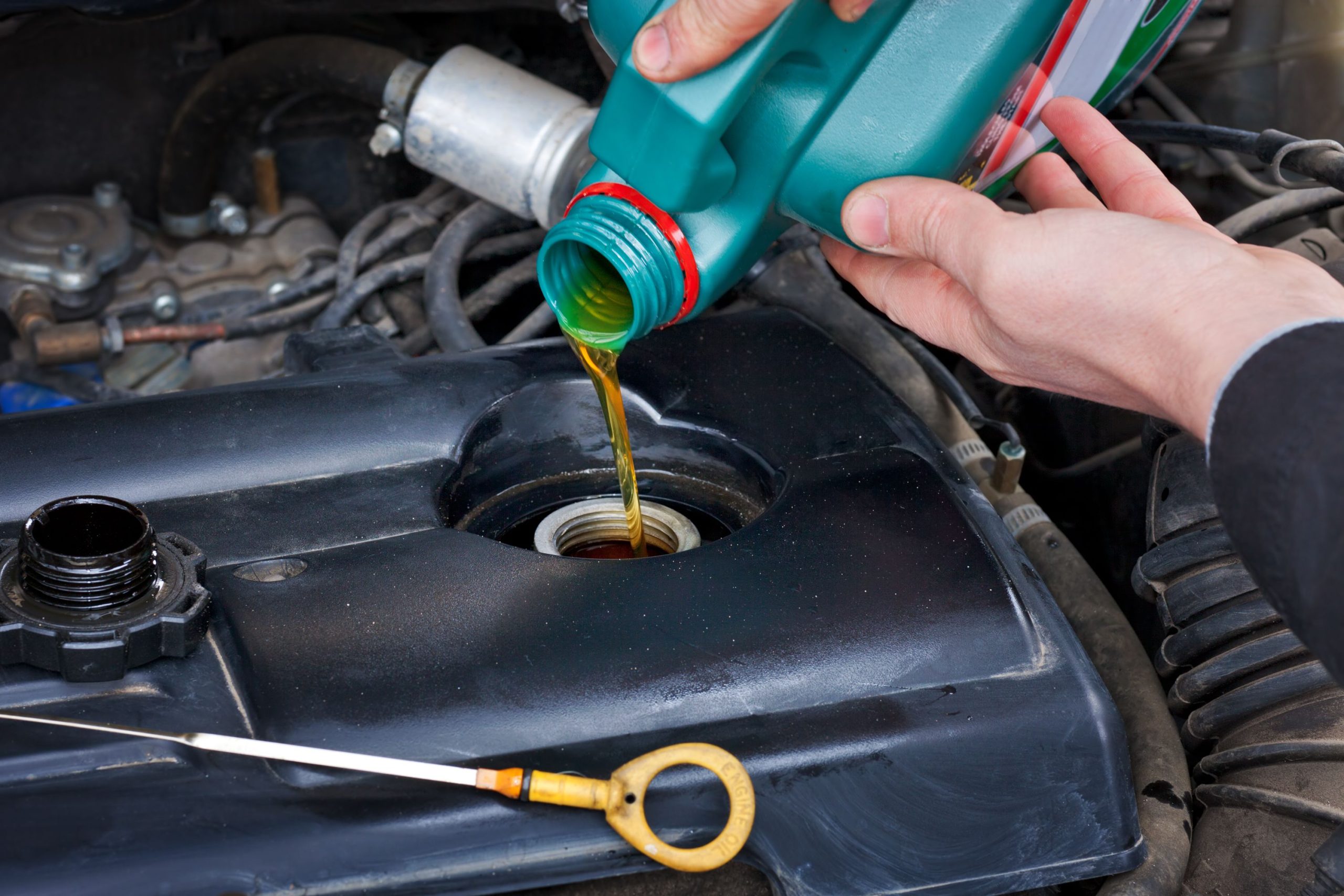Change Oil Every 6 Months: Maintain Your Vehicle’s Engine Health
Regular oil changes are an essential part of vehicle maintenance. It is a simple process that can help extend the life of the engine and keep it running smoothly. The frequency of oil changes has been a topic of debate among car owners and mechanics alike. While some suggest changing the oil every 3,000 miles, others recommend doing it every six months.
Changing oil every six months is a more recent recommendation that has gained popularity in recent years. This interval is based on the fact that modern engines and oils have improved significantly over the years. Engines are now built with better materials, and oils are designed to last longer and perform better. This means that changing the oil every 3,000 miles is no longer necessary, and car owners can save money by extending the interval to six months.
Key Takeaways
- Changing oil every six months is a more recent recommendation based on improved engine and oil technology.
- Modern engines and oils are built to last longer and perform better, making frequent oil changes unnecessary.
- Changing oil every six months can help extend the life of the engine and save car owners money in the long run.
Understanding Oil Types

When it comes to changing your car’s oil, there are different types of oil to choose from. The most common types of oil are conventional petroleum-based oil, synthetic blend, fully synthetic, and high mileage oil. Each type of oil has its own benefits and drawbacks, and it is important to choose the right type of oil for your vehicle.
Conventional petroleum-based oil is the most common type of oil used in cars. It is affordable and readily available. However, it breaks down faster than synthetic oils and may not perform as well in extreme temperatures.
Synthetic blend oil is a mix of conventional and synthetic oils. It offers better performance in extreme temperatures than conventional oil and is less expensive than fully synthetic oil. However, it may not provide the same level of protection as fully synthetic oil.
Fully synthetic oil is the most expensive type of oil, but it offers the best performance in extreme temperatures and provides superior protection for your engine. It also lasts longer than conventional oil and may save you money in the long run.
High mileage oil is designed for vehicles with over 75,000 miles on the odometer. It contains additives that help reduce oil consumption, reduce leaks, and protect older engines.
When choosing the type of oil for your car, it is essential to consider your driving habits, the age of your vehicle, and the manufacturer’s recommendations. Always consult your owner’s manual for the recommended oil type and change interval.
Related Posts:
Frequency of Oil Change

Determining how often to change your oil is an important aspect of vehicle maintenance. In the past, it was common to change oil every three months or 3,000 miles, whichever came first. However, with advancements in engine materials, manufacturing methods, and oil technology, oil-change intervals have increased.
The oil-change interval for a vehicle can vary depending on several factors. These factors include the type of vehicle, driving conditions, and the type of oil used. For example, a vehicle that is driven in severe conditions, such as stop-and-go traffic or extreme temperatures, may require more frequent oil changes than a vehicle that is driven under normal conditions.
Many newer vehicles are equipped with oil-life monitoring systems that automatically adjust the oil-change interval based on driving conditions. These systems use sensors to monitor engine performance and can extend the oil-change interval beyond the traditional 3,000-mile mark.
It is important to follow the manufacturer’s recommendations for oil change intervals. These recommendations can be found in the owner’s manual or maintenance schedule. In general, most manufacturers recommend changing oil every 7,500 to 10,000 miles for vehicles that are driven under normal conditions.
However, it is important to note that some manufacturers still recommend changing oil every three months or 3,000 miles for vehicles that are driven in severe conditions. It is important to follow these recommendations to ensure that the vehicle’s engine is properly lubricated and protected.
In summary, the frequency of oil changes depends on several factors, including the type of vehicle, driving conditions, and the type of oil used. It is important to follow the manufacturer’s recommendations for oil change intervals to ensure that the vehicle’s engine is properly lubricated and protected.
Impact of Driving Habits and Conditions
The frequency of oil changes is not only determined by mileage but also by driving habits and conditions. Short trips, heavy loads, towing, dusty roads, and stop-and-go driving can all contribute to the need for more frequent oil changes.
Short trips, which are common in city driving, can cause moisture and fuel to accumulate in the oil, leading to the formation of sludge and other contaminants. Heavy loads and towing can put extra strain on the engine and cause it to run hotter, which can break down the oil more quickly. Dusty roads can also cause contaminants to accumulate in the oil.
Highway driving, on the other hand, is generally less demanding on the engine and oil, as the engine operates at a consistent speed and temperature. Low speeds for long distances, however, can cause the engine to run cooler and not burn off contaminants as effectively, leading to the need for more frequent oil changes.
Stop-and-go driving, which is common in city driving, can also cause the engine to run hotter and break down the oil more quickly. This is because the engine is constantly starting and stopping, which can cause it to run less efficiently and generate more heat.
In summary, driving habits and conditions can have a significant impact on the frequency of oil changes. It is important to follow the manufacturer’s recommendations for oil changes but also to consider the specific driving habits and conditions that the vehicle is subjected to.
Engine Wear and Oil Change

Regular oil changes are essential for maintaining a healthy engine. Engine oil serves as a lubricant, reducing friction between moving parts and preventing wear and tear. Over time, however, oil loses its effectiveness and can no longer provide the necessary protection. This is why it is crucial to change oil at regular intervals.
Engine wear occurs as a result of friction between moving parts. When oil is not changed frequently enough, it becomes contaminated with dirt, debris, and other particles. This contamination can cause oil to break down and lose its lubricating properties. As a result, metal parts can grind against each other, causing wear and tear.
Oil change intervals vary depending on driving conditions and the type of oil used. Some manufacturers recommend changing oil every 3,000 miles, while others suggest intervals of up to 7,500 miles. However, it is generally recommended to change oil every six months, regardless of mileage. This is because oil can break down over time, even if the car is not driven frequently.
Regular oil changes can improve engine performance and extend the life of the engine. When oil is fresh and clean, it can lubricate moving parts more effectively, reducing friction and wear. This can lead to better fuel economy, improved horsepower, and a smoother ride.
In conclusion, changing oil every six months is an important part of engine maintenance. It can help prevent engine wear and tear, improve performance, and extend the life of the engine. By following manufacturer recommendations and staying on top of oil changes, drivers can keep their engines running smoothly for years to come.
Checking Oil Levels
Checking the oil level in a car is a crucial part of maintaining the engine’s health. The oil level ensures that the engine is lubricated and running smoothly. There are two ways to check the oil level: using the dipstick or the oil life monitor.
Dipstick
The dipstick is a long, thin metal rod that is inserted into the engine’s oil reservoir. To check the oil level, the car should be parked on level ground and turned off for at least 10 minutes. Then, the dipstick should be removed, wiped clean with a cloth, and reinserted into the oil reservoir. After that, the dipstick should be removed again, and the oil level should be checked. The oil level should be between the two marks on the dipstick.
Oil Level Monitor
Newer cars may have an oil life monitor that can be accessed through the car’s dashboard. This monitor uses sensors to measure the oil level and quality. It can provide an accurate reading of the oil level and indicate when it’s time for an oil change. It’s important to follow the manufacturer’s recommendations for checking the oil level using the oil life monitor.
Regardless of the method used to check the oil level, it’s recommended to check it at least once a month or every other gas fill-up. This will ensure that the engine has enough oil to run smoothly and prevent damage caused by low oil levels.
In conclusion, checking the oil level is an essential part of maintaining a car’s engine. Using the dipstick or oil life monitor can help ensure that the engine is properly lubricated and running smoothly.
Oil Change Process
Changing the oil in a vehicle is a critical part of routine maintenance that can help extend the life of the engine. The process typically involves draining the old oil from the engine, replacing the oil filter, and adding new oil to the engine. Here are the steps involved in the oil change process:
- Drain the old oil: The first step in the oil change process is to drain the old oil from the engine. This is typically done by removing the drain plug from the oil pan and allowing the oil to drain into a container. It is important to ensure that the engine is cool before attempting to drain the oil.
- Replace the oil filter: Once the old oil has been drained, the oil filter should be replaced. The oil filter is responsible for removing contaminants from the oil, and it should be replaced every time the oil is changed. To replace the oil filter, the old filter should be removed and the new filter should be installed according to the manufacturer’s instructions.
- Add new oil: After the oil filter has been replaced, new oil should be added to the engine. The amount of oil required will vary depending on the make and model of the vehicle, so it is important to consult the owner’s manual or a professional mechanic for guidance. The oil should be added slowly, and the level should be checked with the dipstick to ensure that it is at the correct level.
- Dispose of the old oil: Once the oil change is complete, it is important to dispose of the old oil properly. Most auto repair shops and some oil change shops will accept used oil for recycling. It is important not to dump the old oil down the drain or in the trash, as this can be harmful to the environment.
Overall, changing the oil in a vehicle every six months or every 5,000 to 7,000 miles (whichever comes first) is a good rule of thumb. While some vehicle manufacturers may recommend longer intervals between oil changes, frequent oil changes can help prevent engine wear and extend the life of the engine. By following the steps outlined above, anyone can change their own oil or have it done at a shop.
Understanding Oil Change Intervals

Oil change intervals have been a topic of debate among car owners for years. While some believe that changing the oil every 3,000 miles is necessary, others argue that it is unnecessary and a waste of money. In reality, the answer lies somewhere in between.
Owner’s Manual and Manufacturer Recommendations
The best place to start when determining oil change intervals is the owner’s manual. This document will provide the manufacturer’s recommendations for oil change intervals based on the make and model of the vehicle. Following these recommendations will ensure that the vehicle is maintained properly and will help to prevent any unnecessary damage.
Service Interval and Oil-Life Monitor
Many modern vehicles come equipped with a service interval or oil-life monitor system. These systems use an algorithm to determine when the oil needs to be changed based on factors such as driving conditions, engine load, and temperature. When the system determines that the oil needs to be changed, a warning light will appear on the dashboard.
Algorithm
The algorithm used by service interval and oil-life monitor systems is designed to take into account a variety of factors that can impact the life of the oil. Factors such as driving conditions, engine load, and temperature are all taken into consideration when determining when the oil needs to be changed. This means that the oil change interval will vary depending on how the vehicle is used.
In conclusion, understanding oil change intervals is important for maintaining the health of a vehicle’s engine. Following the manufacturer’s recommendations and utilizing service interval or oil-life monitor systems can help to ensure that the oil is changed at the appropriate time. It is important to remember that oil change intervals will vary depending on how the vehicle is used, so it is important to pay attention to any warning lights or messages that may appear on the dashboard.
Impact of Oil Change on Engine Life
Regular oil changes are essential for maintaining the health of a car’s engine. The engine oil lubricates the moving parts of the engine and helps to reduce friction and wear. Over time, the oil breaks down and becomes less effective, which can lead to engine damage and permanent damage to the bearings and pistons.
If the engine oil is not changed regularly, it can become contaminated with dirt, debris, and other particles. These contaminants can cause damage to the engine over time, leading to reduced engine life and costly repairs. In extreme cases, failure to change the oil can result in the engine seizing up completely.
The bearings in the engine are particularly vulnerable to damage if the oil is not changed regularly. The bearings are responsible for supporting the weight of the crankshaft and connecting rods, and they rely on a thin layer of oil to prevent metal-to-metal contact. If the oil becomes too thin or contaminated, the bearings can become damaged, leading to costly repairs.
Similarly, the pistons can also be damaged if the oil is not changed regularly. The pistons move up and down inside the engine, and they rely on a thin layer of oil to reduce friction and wear. If the oil becomes too thin or contaminated, the pistons can become damaged, leading to reduced engine performance and increased fuel consumption.
In summary, regular oil changes are essential for maintaining the health of a car’s engine. Failure to change the oil regularly can lead to engine damage, permanent damage to the bearings and pistons, and reduced engine life. Car owners should consult their owner’s manual or a trusted mechanic to determine the recommended oil change interval for their vehicle.
Environmental Impact of Oil Changes
Oil changes are a necessary maintenance task for most vehicles. However, the environmental impact of oil changes should not be ignored. Used oil can be harmful to the environment if it is not disposed of properly.
When oil is changed, the old oil is drained from the engine and replaced with new oil. The old oil is usually collected in a pan and then transferred to a storage container for disposal. If the used oil is not disposed of properly, it can contaminate soil and water sources. Used oil can also harm wildlife if they come into contact with it.
Fortunately, there are ways to dispose of used oil in an environmentally friendly manner. Many auto shops and recycling centers will accept used oil for recycling. The used oil can be re-refined and used again, reducing the need for new oil production. Recycling used oil also reduces the amount of oil that ends up in landfills.
In addition to proper disposal, there are other ways to minimize the environmental impact of oil changes. Using synthetic oil or extended-life oil can reduce the frequency of oil changes, which in turn reduces the amount of used oil that needs to be disposed of.
Overall, while oil changes are necessary for vehicle maintenance, it is important to consider the environmental impact of used oil. Proper disposal and minimizing the amount of used oil generated can help reduce the impact on the environment.





[…] the Ford Mustang that includes powerful cooling fans, a more efficient radiator, and a transmission oil […]
[…] Change oil and oil filter, rotate tires […]
[…] Engine Oil – Old contaminated oil can thicken up when cold. Change oil and switch to low-viscosity winter grade if recommended. This allows the oil to flow quickly on start up. […]
[…] Change Oil Every 6 Months: Maintain Your Vehicle’s Engine Health […]
[…] 3. Oil Changes […]
[…] The timing for oil changes can vary based on several factors: the type of oil used, your vehicle’s age, your driving habits, and environmental conditions. Traditional guidelines suggest every 5,000 miles or six months for conventional oil changes, but these intervals may differ for synthetic blends and full synthetic oils. Regularly checking your oil level and color can help you determine the right time for a change. For more details, read our article on When to Change Your Oil. […]